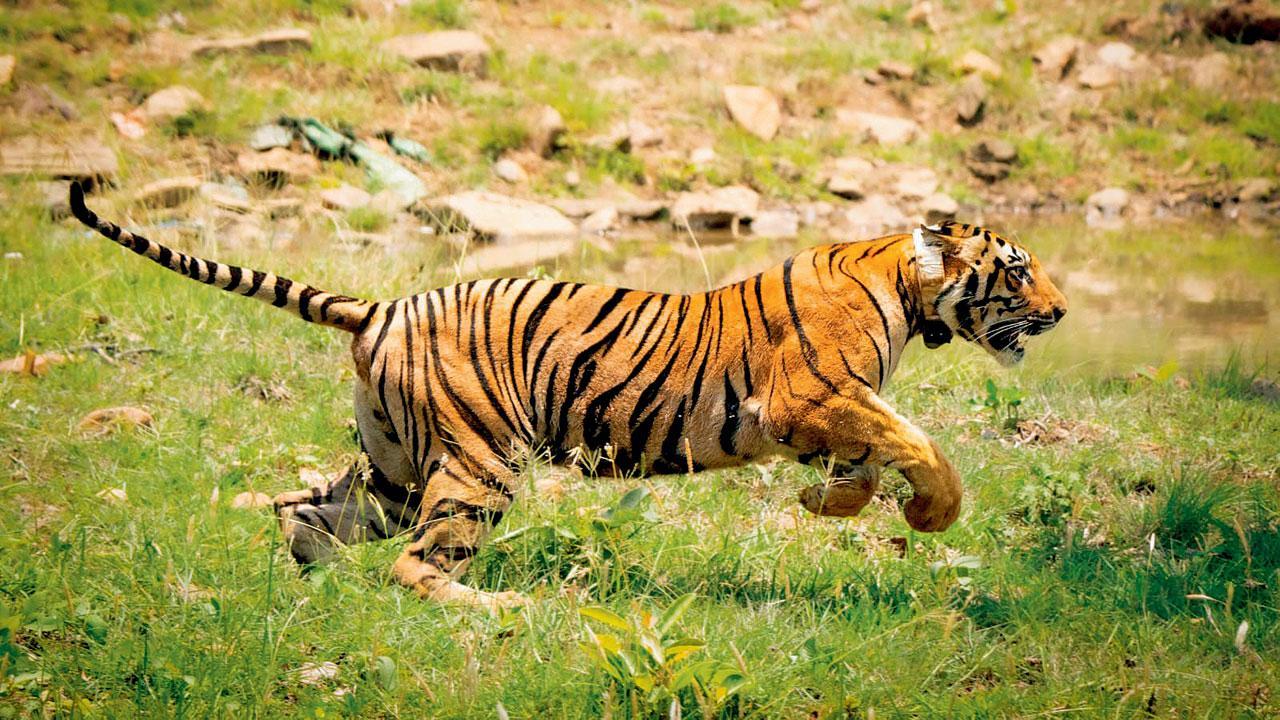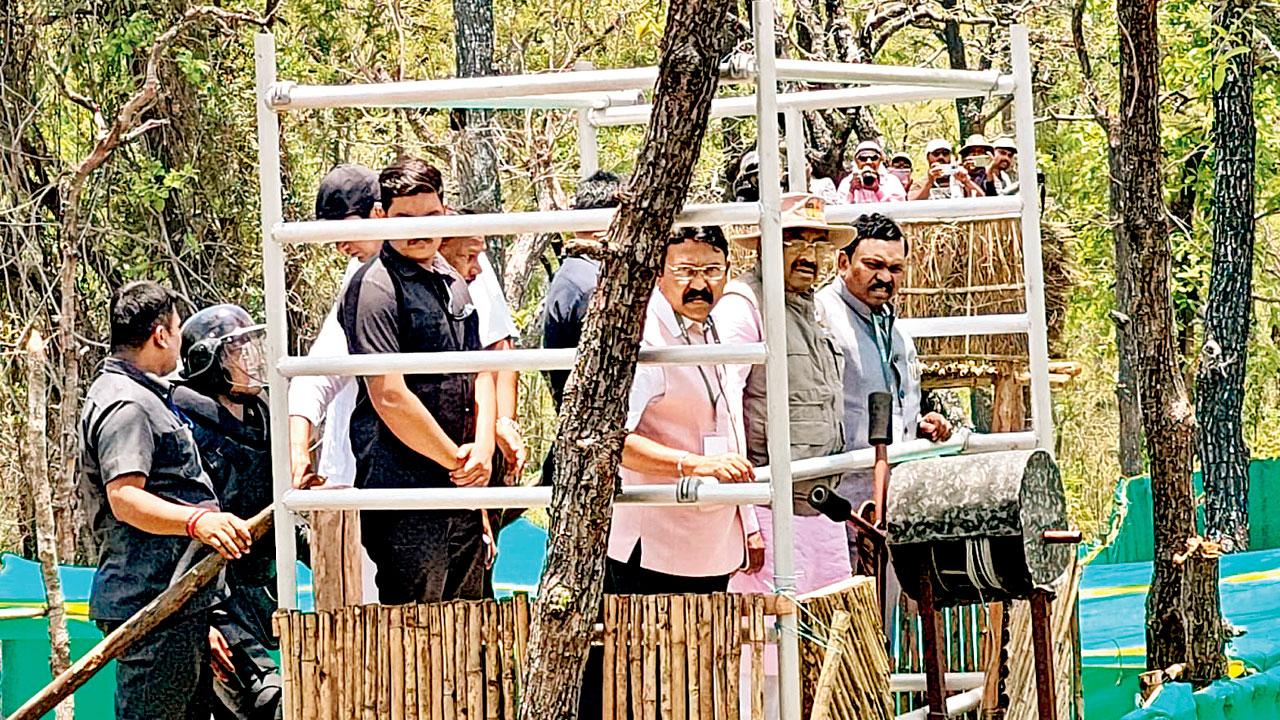Of the two females translocated to lower human-wildlife conflict, one is bringing down free-roaming cattle

Tigress NT1 has travelled 1,458 kms (straight line distance) to reach MP, while NT2 has happily settled down in NNTR, roaming 958 kms (straight line distance). Pic Courtesy/NNTR and Maharashtra Forest Department
The two tigresses translocated to low-density zones in Navegaon Nazira Tiger Reserve (NNTR) in eastern Maharashtra earlier this year are thriving, data from their radio collars shows. And one of them has also crossed the border and taken to hunting free-roaming cattle rather than wild animals.
ADVERTISEMENT
Despite reservations of the wildlife preservation community, tigresses NT1 and NT2 were radio collared, and the data has revealed intriguing insights. NT1 has travelled 1,458 kms (straight line distance) to reach Madhya Pradesh, while NT2 was happy to settle down in NNTR, roaming 958 kms (straight line distance).
In all, four to five tigresses are to be brought to NNTR to balance the ratio between the sexes of the species in the region. NNTR has a core area of 656.36 sq km, and a buffer of 1241.24 sqkm. According to the All India Tiger Estimate report of 2022, the reserve has 11 unique tigers which is consider low-density as it has the potential to hold 20 adults.

The thriving of NT1 and NT2, translocated to the core area of Nagzira Wildlife Sanctuary, will decide the pace of the entire project. Besides boosting tourism and thus providing more livelihood opportunities for those living along the reserve, the project could be an important measure in reducing human wildlife conflict in the Brahmapuri landscape. Data also shows that while NT1 is used to hunting jungle prey, currently she prefers a diet of free-ranging cattle, while NT2 is happy eating wild. Further observation of NT1 will depict whether her prey preferences pose a threat to human habitation.
On May 14, one tigress was captured in the Kolsa range in Tadoba Andhari Tiger Reserve; and two days later, on May 16, a two-and-a-half-year-old was tranquilised in the Armori range in Gadchiroli for translocation. Senior scientist Dr Bilal Habib from the Wildlife Institute of India (WII) and his team radio collared both tigresses before they were released into NNTR on May 20. Chandrapur district has a high density of tigers—over 200 of them, excluding cubs—and a high ratio of Human Wildlife Conflict (HWC). The translocation project is to tackle the spiking HWC, but also balance the sex ratio of the species in NNTR.
“Findings show that over the last seven months, NT1 has covered a remarkable 1,458 kms (straight line distance) to settle in Balaghat district in the neighbouring state, while NT2 has settled in NNTR,” said Jayarame Gowda R, Field Director, NNTR. “NT1 was released in Nagzira, but stayed in the core area for just two to three days before travelling towards Gondia city but turning back to spend 40to 50 days in NNTR’s buffer zone. Later, she headed towards Kirnapur in Madhya Pradesh’s Balaghat district and has now settled there. NT2 is roaming the reserve’s core and buffer area. WII scientists are of the opinion that when both tigresses settle down, the radio collars should be removed. We have written to the Principal Chief Conservator of Forest (PCCF) Wildlife about this.”
In tiger territory
>> NNTR is situated in Gondia and Bhandara districts of the state
>> It’s the 46th reserve to be established as part of Project Tiger
>> As per the All India Tiger Estimations report of 2022, India’s minimum tiger population is 3,167 based on data from camera-trapped areas
>> Further analysis by the Wildlife Institute of India has estimated an upper limit of 3,925 tigers
>> This indicates a commendable annual growth rate of 6.1 per cent per annum
>> Madhya Pradesh has the highest population at 785, and Maharashtra ranks fourth with 444
 Subscribe today by clicking the link and stay updated with the latest news!" Click here!
Subscribe today by clicking the link and stay updated with the latest news!" Click here!







